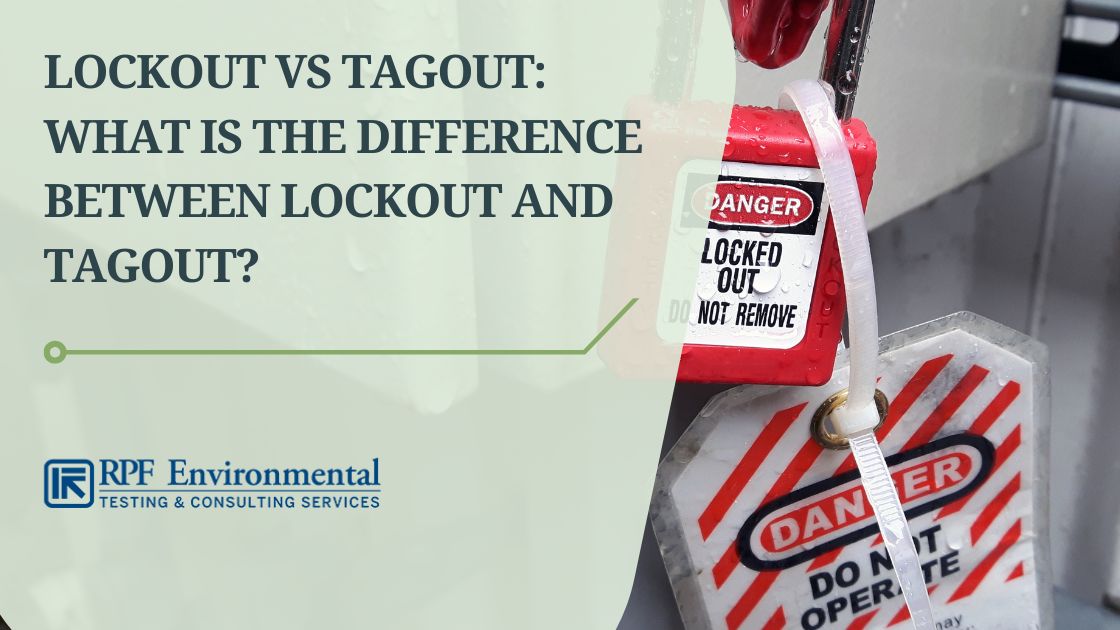Lockout / Tagout (LOTO) procedures are among the safety measures that can be implemented to prevent workplace fatalities when it comes to controlling hazardous energy. But what is the difference between the two? Why is lockout more effective and safer than tagout? Learn more about lockout vs tagout, OSHA LOTO standards, implementing LOTO programs, and more here!

RPF Environmental has seasoned professionals and industry experts who provide environmental health and safety courses and seminars including lockout/tagout training. We serve various industries in Maine, New Hampshire, Massachusetts, and other areas across the country. Contact us now!
Definition of Lockout / Tagout (LOTO)
According to OSHA, lockout/tagout consists of a set of procedures and practices that aim to safeguard employees from unexpected hazardous energy releases. These releases include those caused by unauthorized machinery startup during maintenance and service activities. LOTO procedures ensure that the equipment is isolated from any source of potentially hazardous energy by holding it in an “off” or a safe position.
What is Hazardous Energy?
OSHA defined hazardous energy as any “electrical, mechanical, hydraulic, pneumatic, chemical, thermal, or other sources in machines and equipment that can be hazardous to workers.”
Lockout Vs Tagout: What’s the Difference?
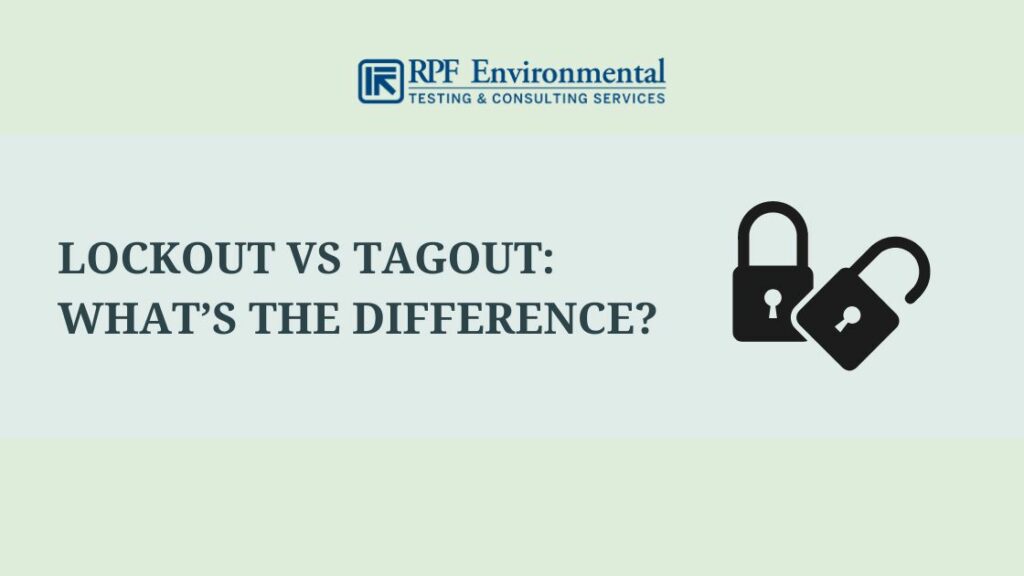
Below are the definitions of lockout, tagout, lockout devices, and tagout devices according to OSHA’s LOTO standard:
OSHA Definition
Lockout
“The placement of a lockout device on an energy isolating device, in accordance with an established procedure, ensuring that the energy isolating device and the equipment being controlled cannot be operated until the lockout device is removed.”
Tagout
“The placement of a tagout device on an energy isolating device, in accordance with an established procedure, to indicate that the energy isolating device and the equipment being controlled may not be operated until the tagout device is removed.”
Lockout Device OSHA Definition
“A device that utilizes a positive means such as a lock, either key or combination type, to hold an energy isolating device in a safe position and prevent the energizing of a machine or equipment.”
Tagout Device OSHA Definition
“A prominent warning device, such as a tag and a means of attachment, which can be securely fastened to an energy isolating device.”
Simple Definition
Lockout
Involves placing locks on the hazardous equipment/machine to keep it in an “off” position and prevent energy release.
Tagout
Involves placing tags on shut-off devices or switches to inform other people that maintenance is ongoing and should not start the equipment.
More on Lockout Procedures
Lockout procedures place locks on specific parts of the hazardous equipment during repairs. Since the lockout device can only be unlocked using a key, it is impossible to remove it. This can fully prevent accidental and unauthorized startup of the equipment to avoid accidents and serious injuries.
More on Tagout Procedures
Tagout procedures involve posting warning tags on the equipment to warn employees not to re-energize it. They should be used together with lockout devices for enhanced protection because tags only serve as warning devices. Thus, can only provide a minimal level of protection.
Aside from not being able to physically stop re-energization, employees can easily remove and ignore tagout devices. Hard-to-read and ambiguous writing on tags can also make the tagout device ineffective.
NOTE: Tagout devices should only be used to add a second layer of protection in addition to lockout devices.
When Can Tagout Be Used in Place of Lockout?
Below are situations where you can use tagout only without using lockout devices:
- When it is impossible to use locks (you can’t place them anywhere on the machine)
- When the equipment is lockable but the employer can provide full protection to the workers
In addition, using only tagout procedures requires the employer to comply with LOTO standards by establishing a more rigorous lockout/tagout program.
What is the Purpose of Using Lockout/Tagout Devices?
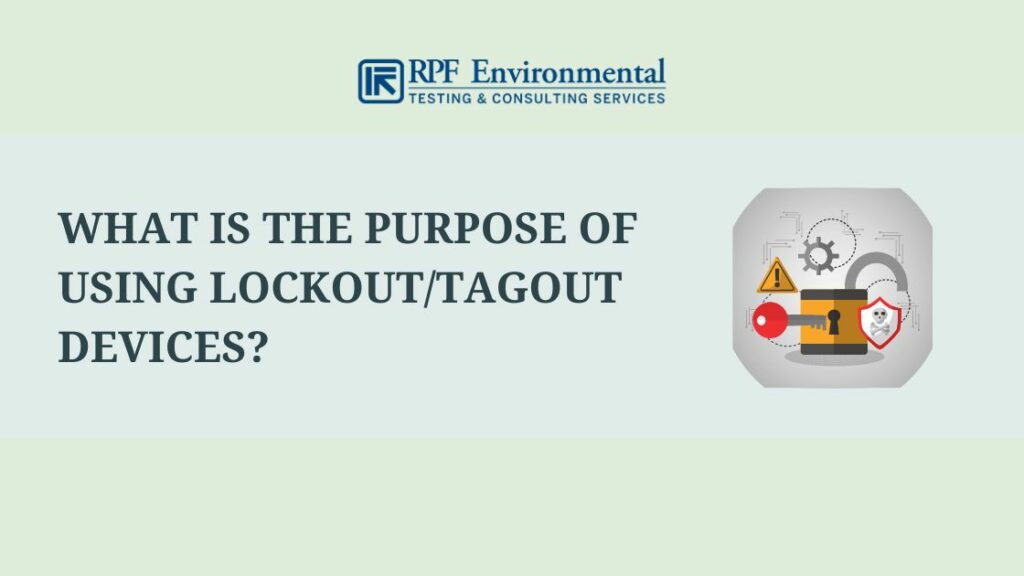
Lockout/tagout is important in reducing workplace hazards during repair and maintenance works by preventing the accidental startup of hazardous equipment. By isolating the equipment from energy sources, it can prevent serious injuries such as electrocution, fractures, amputations, and even death.
Based on OSHA’s fact sheet, laborers, machine operators, and craft workers are among the employees who have the highest risk of being injured when servicing machines. Complying with LOTO standards can prevent around 50,000 injuries and 120 fatalities each year.
LOTO procedures can also reduce costly replacements by extending the equipment’s lifespan. As for business owners, they can avoid downtimes at work and maintain productivity by keeping their employees safe from injuries. (Recuperation of injured workers due to hazardous energy exposure takes an average of 24 workdays according to OSHA.)
Types of Lockout/Tagout Devices
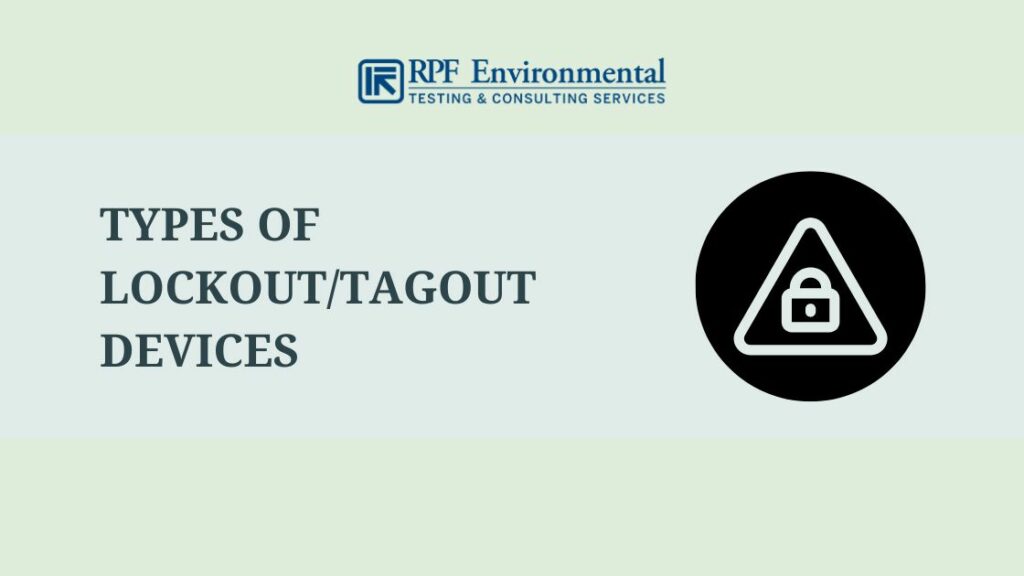
There are many types of LOTO devices. But the right device for your machine will depend on the applicable standards for the LOTO process and the type of work you are doing. Below are some of the common devices used in LOTO procedures:
- Padlocks – Placed on parts of the equipment (e.g. plugs) to prevent the equipment from being physically used.
- Adjustable Cable Lockouts – Used in equipment that requires several lockout points as well as difficult-to-lock parts of the equipment (e.g. handles).
- Hasps – For group lockouts where multiple people are doing maintenance tasks. They allow the use of multiple padlocks when isolating a single energy source.
- Group Lockout Boxes – Another device used for group lockout where the main keys to the energy sources are stored in the box. Each employee has a personal padlock and key that they place on the box to seal the main keys.
- Tagout Tags – Often installed on padlocks to warn other workers that the equipment can’t be used.
Lockout Tagout Procedure: Basic Steps for Locking and Tagging Out Hazardous Equipment
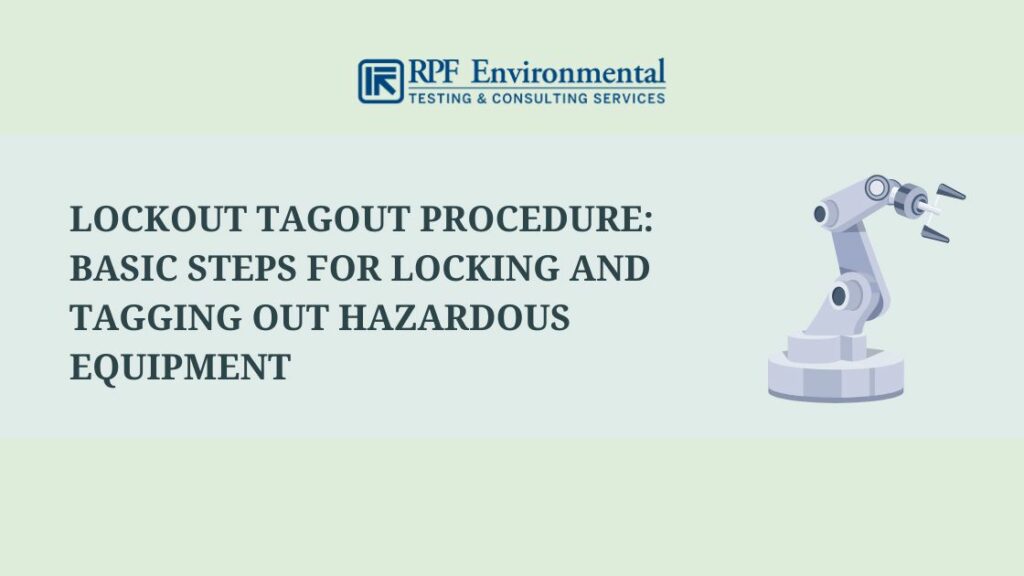
Below are the steps for locking out and tagging out a system based on OSHA’s LOTO standard to guide employers in developing LOTO procedures:
Lockout/Tagout Device Application
1. Notify affected employees before installing lockout/tagout devices
2. The authorized employee must know the following for shutdown preparation:
- Energy type and magnitude
- Energy hazards
- Control methods for the energy
3. Shut down the equipment
4. Locate and de-activate all energy-isolating devices
5. Affix LOTO devices to all energy-isolating devices
6. Relieve, disconnect, restrain, and render safe stored/residual energy
7. Verify the isolation of hazardous energy and ensure the complete de-energization of the equipment
8. Continue the verification of isolation if reaccumulation of hazardous stored energy is possible until maintenance services are done
9. Perform maintenance and servicing activities
Removing LOTO Devices and Restoring Energy to the Equipment
10. Inspect the work area, remove nonessential items, and ensure that the equipment’s components are operationally intact
11. Ensure that all employees have been removed from the area.
12. Notify affected employees regarding the removal of LOTO devices and re-energization of the equipment
13. Remove LOTO devices and reenergize the equipment
Learn more about the effective development and implementation of lockout tagout procedures here.
Lockout Tagout Best Practices to Avoid Mistakes
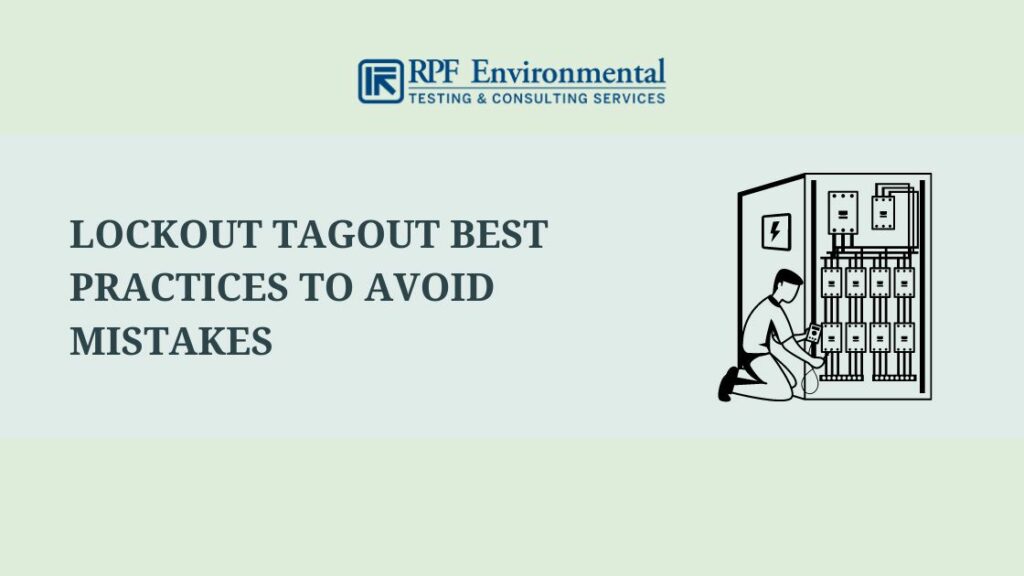
- Use the right LOTO devices that are acceptable for the environment you will be using them in (e.g. using corrosion-resistant in environments involving chemical use)
- Lockout and tagout at the equipment’s power source or main switch (not the control circuit)
- Don’t install LOTO devices in places where they can fall off or be removed easily
- Ensure that you have removed the keys from the LOTO devices
- Ensure that all energy-isolating devices are inoperative
- Replace machine safeguards once maintenance services are done
Establishing a Lockout Tagout Program: LOTO Program Components & Considerations
The OSHA LOTO standard also requires employers to develop energy control programs that satisfy the needs of the workplace and the equipment types. These programs consist of energy control procedures [1910.147(c)(4)], periodic LOTO inspections [1910.147(c)(6)], and employee training [1910.147(c)(7)].
Also Read:
- Hazardous Waste Operations & Emergency Response: What is HAZWOPER?
- Examples of Lockout Tagout Procedures: A Guide to Effective LOTO Programs
- E-Stop Lockout Devices: Can You Use Them in Lockout Procedures?
- Everything You Need to Know About Confined Spaces
FAQs
Lockout devices are definitely more effective and safer to use because they physically prevent the equipment from being used. They can’t also be removed easily without a key. Tagout methods, on the other hand, are just warning signs that can be easily ignored and removed accidentally.
A lockout system uses locks that can only be removed using a key. Thus, rendering the equipment unusable by unauthorized personnel. Tagout systems use tags that serve as warning devices to let other people know that the equipment can’t be used and that maintenance is ongoing.
Examples of lockout tagout devices include padlocks, lockout boxes, and tagout tags.
Conclusion
Lockout and tagout procedures are often used together to ensure the safety of employees during maintenance and servicing activities. However, lockout provides more safety compared to tagout. The OSHA standard requires employers to develop and utilize energy control programs to prevent worker injuries and fatalities in the workplace.
You can trust RPF Environmental’s certified experts to provide you with professional environmental health and safety training including lockout/tagout courses. We’ve been serving thousands of clients across the US for decades. Contact us now!

